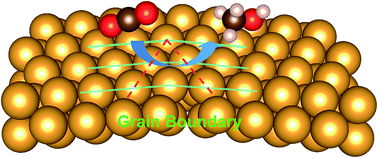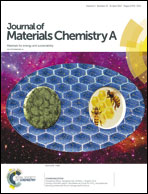Tuning the selectivity and activity of Au catalysts for carbon dioxide electroreduction via grain boundary engineering: a DFT study†
Abstract
Au catalysts possess a high activity to yield gaseous carbon monoxide (CO) at moderate overpotentials for the carbon dioxide CO2 electrochemical reduction reaction (CO2RR). However, tuning selectivity remains a massive challenge towards the production of hydrocarbon species at relatively low potentials. In this study, by means of first principles calculations we propose a promising strategy to tune the selectivity and activity of Au catalysts via grain boundary (GB) engineering. The GB sites on the Au(110) surface are identified to strongly bind *CO so as to compensate for the unsaturated coordination of GB atoms, leading to a high selectivity toward CH3OH; its catalytic performance is comparable to Cu for generating CH4. In addition, GBs on the Au(100) surface are also investigated for comparison, which can greatly promote CO production. Our findings suggest that GB engineering is an effective means to improve the CO2RR performance of a given catalyst, which will motivate reasonable design and synthesis of novel electrocatalysts for CO2 reduction to produce hydrocarbon species.



 Please wait while we load your content...
Please wait while we load your content...